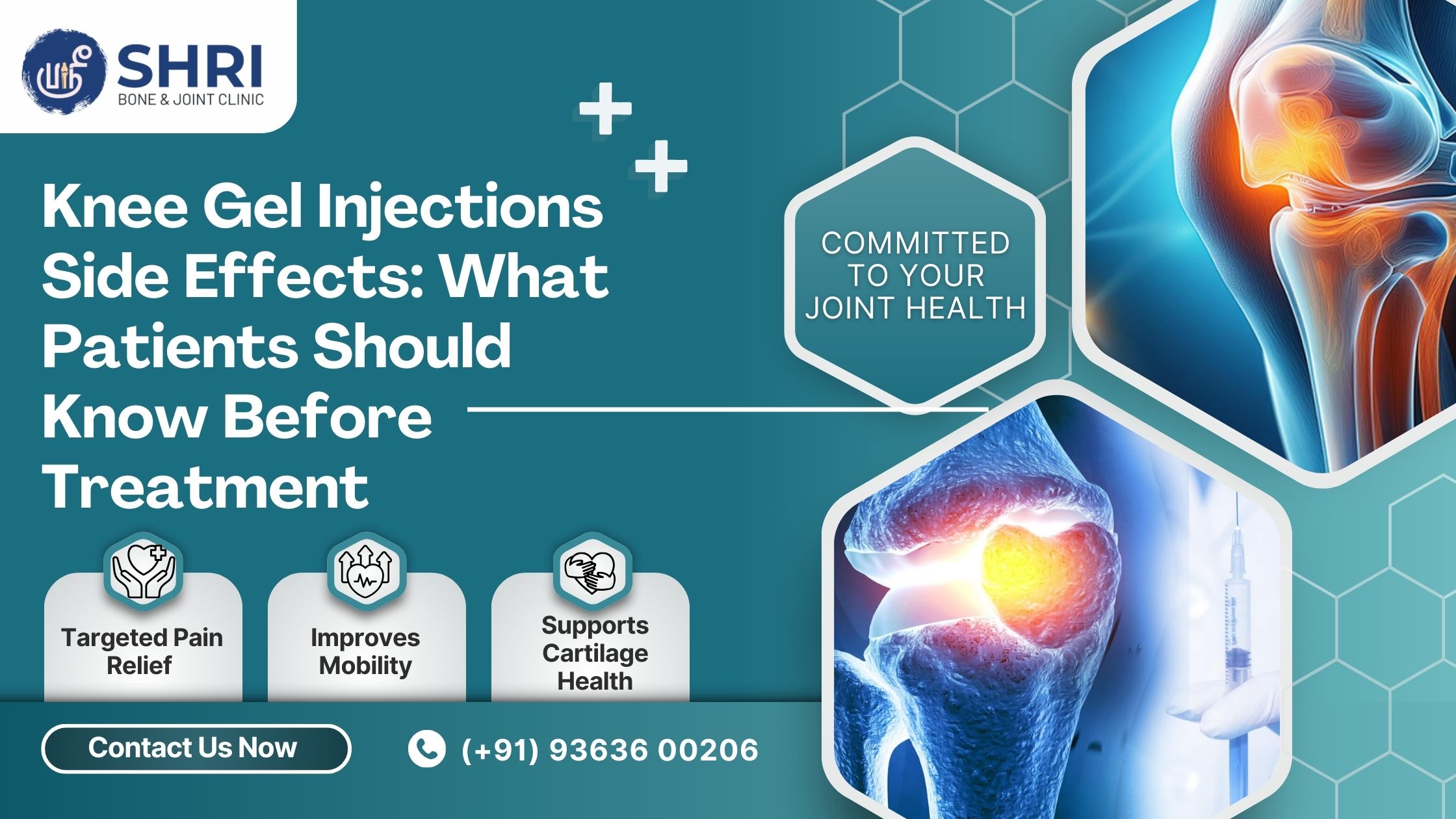Knee gel injections, also called hyaluronic acid or viscosupplementation injections, have become a popular treatment for managing knee osteoarthritis and chronic joint pain. They work by restoring lubrication inside the knee joint, which helps reduce friction, improve cushioning, and ease discomfort during movement.
While many patients report good results, it’s natural to wonder about possible side effects of knee gel injections before starting treatment. Understanding both the benefits and the risks allows patients to make informed decisions and know what to expect.
How Do Knee Gel Injections Work?
The fluid inside the knee naturally contains hyaluronic acid, a substance that provides cushioning and lubrication. In conditions like osteoarthritis, this fluid becomes thinner and less effective. Gel injections replenish hyaluronic acid, helping the joint glide more smoothly and reducing stiffness.
The injections are usually recommended when first-line treatments such as pain relievers, weight management, and physical therapy do not provide enough relief.
Common Side Effects of Knee Gel Injections
Most patients tolerate gel injections well, but like any medical treatment, some side effects can occur. These are usually mild and temporary.
- Pain or swelling at the injection site – Some patients may feel mild soreness, warmth, or swelling in the knee for a day or two.
- Stiffness or heaviness – Temporary joint stiffness may occur shortly after the injection.
- Bruising – Minor bruising at the injection spot is possible, especially in patients with sensitive skin.
- Temporary increase in pain – A small percentage of patients may notice increased discomfort for 24–48 hours before improvement begins.
These effects usually resolve on their own with rest, ice, and over-the-counter pain medication.
Rare but Possible Side Effects
Although uncommon, some patients may experience more serious side effects:
- Allergic reaction – Rare reactions can occur in patients allergic to proteins derived from birds (some hyaluronic acid products are made from rooster combs). Synthetic, non-animal gels reduce this risk.
- Infection – Any injection carries a very small risk of infection at the site. Proper sterile technique makes this extremely rare.
- Bleeding or fluid build-up – Some patients may experience increased fluid (effusion) in the knee joint.
- Inflammatory flare – A reaction called “pseudoseptic arthritis” can cause sudden pain and swelling, but it usually resolves with treatment.
Who Is at Higher Risk of Side Effects?
Not everyone is a suitable candidate for gel injections. Risks may be slightly higher in:
- Patients with severe knee inflammation or advanced arthritis
- Those with bleeding disorders or on blood-thinning medication
- Patients with a history of allergic reactions to similar injections
- Individuals with current skin infections near the injection site
A thorough evaluation by Orthopedic Specialists is important to determine whether gel injections are the right option.
How to Reduce the Risk of Side Effects
Patients can take steps to minimize complications:
- Choose an experienced doctor who performs injections under sterile conditions.
- Inform your doctor about allergies, current medications, and medical conditions.
- Rest the treated knee for 24–48 hours after the injection.
- Avoid heavy exercise or high-impact activities for a few days.
- Follow all post-injection care instructions carefully.
Alternatives to Knee Gel Injections
While gel injections can help many patients, they may not work for everyone. Alternatives include:
- Medications such as anti-inflammatories or pain relievers
- Physiotherapy for strengthening and improving flexibility
- Corticosteroid injections for quick but temporary pain relief
- Platelet-rich plasma (PRP) therapy for promoting healing
- Surgery such as knee replacement in severe cases
Discussing options with a doctor ensures the most effective treatment plan based on individual needs.
FAQs About Knee Gel Injection Side Effects
Are knee gel injections safe for long-term use?
Yes, they are generally safe, but results vary. Some patients require repeat injections every 6–12 months. Serious side effects are rare.
Do gel injections cause permanent damage?
No. Side effects like swelling or soreness are temporary. Severe reactions are very uncommon and can be treated effectively.
Can I walk after a knee gel injection?
Yes, most patients can walk right after treatment. However, it’s best to avoid strenuous activity for at least 24–48 hours.
How long do gel injection side effects last?
Minor side effects usually resolve within a few days. If symptoms persist or worsen, medical review is necessary.
Who should avoid knee gel injections?
Patients with skin infections near the injection site, allergies to hyaluronic acid products, or severe joint infections should avoid them.
What is the cost of gel injections compared to other treatments?
Costs vary depending on the brand and number of injections. While often more expensive than pain medications, they may delay the need for surgery.
Conclusion
Knee gel injections are an effective option for reducing knee pain and stiffness, especially in osteoarthritis. While most patients experience only minor side effects like temporary soreness or swelling, rare complications can occur. The best way to minimize risks is to consult experienced Orthopedic Specialists who can recommend the right treatment.
For many patients, Gel Injection for Knee Pain provides meaningful relief and helps delay the need for more invasive procedures. Being aware of possible side effects ensures patients are better prepared and confident about their treatment journey.

